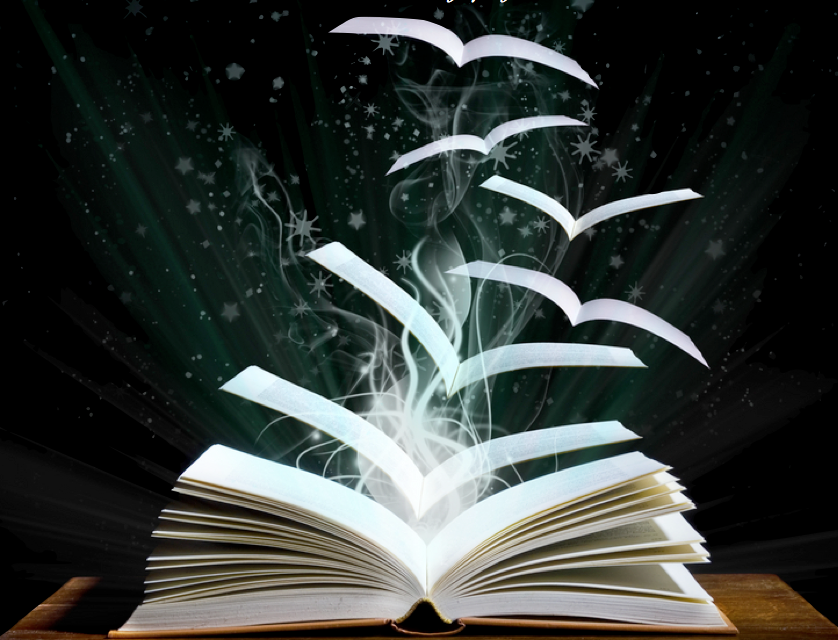Microtension: The Magic That Makes Readers Turn Pages
This post originally ran on Jane Friedman’s blog earlier in the year.
There are a number of “ingredients” that make up a commercially successful novel, regardless of genre. Scenes that end with high moments that deliver a punch in the last lines. Evocative, rich sensory detail. Dynamic dialogue that accomplishes much more than conveying information … and the list goes on.
But the greatest and most understated ingredient of a commercially successful novel is microtension. And few writers understand what this is and how it can be used brilliantly in fiction.
A Constant State of Tension
Tension is created by lack. Lack of understanding, lack of closure, lack of equilibrium or peace. When your readers have questions, that creates tension. When they need to know what happens next, that is tension.
Masterful writers keep their readers in a constant state of tension. And that’s a good thing.
But here’s something to keep in mind: our characters may be tense, but that doesn’t mean readers are tense in response. A character with a tightened fist or clenched jaw does not ensure readers will respond in the same way. And that might not even be the desired response a writer is hoping for.
What the characters think, feel, and show must be carefully executed to evoke the desired emotional response in readers.
The tension we writers want to focus on most is the tension our readers feel. If we don’t keep them in a state of expectation, they’ll start nodding off, and next thing you know, our novel slips unread to the floor.
That means getting tension on every page. How is that possible?
By focusing on microtension.
The Difference between Tension and Microtension
Just what is microtension? Just as the prefix suggests, it’s tension on a micro level, or in small, barely noticeable increments. Your big plot twists and reversals and surprises are macro-tension items. And those have great potential for sparking emotional response in readers. But microtension is achieved on a line-by-line basis.
For example, anytime a character has conflicting feelings, you have microtension. Microtension can be small, simmering, subtext, subtle. Even the choice of words or the turn of a phrase can produce microtension by its freshness or unexpected usage.
Microtension is created by the element of surprise. When readers are surprised by the action in the scene, the reaction of characters, or their own emotional reactions, that is successful microtension at work.
A sudden change in emotion can create tension. A character struggling between two opposite emotions creates tension. Odd contradictory emotions and reactions can create microtension.
Microtension is created when things feel off, feel contradictory, seem puzzling.
Maybe that sounds crazy, but if characters are sitting around happy with nothing bothering them, you have a boring scene that readers will stop reading. Sure, at the end of your book, you might have that wonderful happy moment when it’s all wrapped up and the future, finally, looks bright, but that’s why the book ends there.
A Look at Gone Girl
Let’s take a look at part of the opening scene of the 2012 blockbuster best seller Gone Girl by Gillian Flynn. The characters, Nick and Amy Dunne, greet each other one morning—like any married couple, we’d expect.
At the start of the scene we get this strange thought in Nick’s head that seems to be interrupting the typical “wake up in the morning” ritual we tend to experience each day:
The sun climbed over the skyline of oaks, revealing its full summer angry-god self. Its reflection flared across the river toward our house, a long blaring finger aimed at me through our frail bedroom curtains. Accusing: You have been seen. You will be seen.
The sun is not warming and bright and inviting; it’s angry, accusatory. We immediately are piqued with curiosity—What is Nick feeling guilty about? What has he done? That alone might get many readers turning pages.
Action in a scene creates tension all by itself. Any element of mystery in the plot makes readers want to know what happens next. But masterful writers will also embed words, phrases, and lines of microtension that charge the pages. Describing the sun as angry and watching him, juxtaposed with the word frail (which perhaps hints at the condition of his marriage or his ability to keep his secrets hidden), is microtension.
Note the interest and tension created by the unexpected and incongruous thoughts and reactions Nick has as this moment plays out:
It was our five-year anniversary.
I walked barefoot to the edge of the steps and stood listening, working my toes into the plush wall-to-wall carpet Amy detested on principle, as I tried to decide whether I was ready to join my wife. Amy was in the kitchen, oblivious to my hesitation. She was humming something melancholy and familiar. I strained to make it out—a folk song? A lullaby?—and then realized it was the theme to M.A.S.H. Suicide is painless. I went downstairs.
I hovered in the doorway, watching my wife. Her yellow-butter hair was pulled up, the hank of ponytail swinging cheerful as a jump-rope, and she was sucking distractedly on a burnt ?ngertip, humming around it. She hummed to herself because she was an unrivaled botcher of lyrics. When we were ?rst dating, a Genesis song came on the radio: “She seems to have an invisible touch, yeah.” And Amy crooned instead, “She takes my hat and puts it on the top shelf.” When I asked her why she’d ever think her lyrics were remotely, possibly, vaguely right, she told me she always thought the woman in the song truly loved the man because she put his hat on the top shelf. I knew I liked her then, really liked her, this girl with an explanation for everything.
There’s something disturbing about recalling a warm memory and feeling utterly cold.
Amy peered at the crepe sizzling in the pan and licked something off her wrist. She looked triumphant, wifely. If I took her in my arms, she would smell like berries and powdered sugar.
When she spied me lurking there in grubby boxers, my hair in full Heat Miser spike, she leaned against the kitchen counter and said, “Well, hello, handsome.”
Bile and dread inched up my throat. I thought to myself: Okay, go.
What made you stop and think, essentially, “Wait … what”? That’s how I spot microtension. We expect a couple acknowledging their anniversary to be happy and full of warm thoughts. What do we find here?
First, the mention of carpeting Amy detested. That’s odd he’d think about that. Then he’s hesitating before joining her. It makes us wonder why. She’s humming a tune, and instead of a romantic song or one that has pleasant lyrics or visual associations, it’s a song about suicide from a TV series about medics in the Korean War. Suicide? Wait … what?
Nick doesn’t spend time thinking about this but instead sneaks a glimpse at his wife, who seems the picture of childlike innocence with yellow-butter hair and a ponytail swinging “cheerful as a jump-rope.” This image and the author’s choice of words is incongruous with the song and her sucking on a burnt fingertip, followed by Nick feeling “utterly cold” at this warm memory of his wife botching lyrics.
We already know there is trouble in paradise by the things Nick notices about Amy and his behavior, thoughts, and reactions to her. Again, we have a contradictory, unexpected reaction when Nick, thinking of how sweet his wife would smell in his arms and her apparently friendly greeting to him, prompts bile and dread to inch up his throat.
Wait … what? Readers now are asking questions and wanting answers. What is he dreading? Amy seems to be perfectly pleasant and cheerful, so why is Nick reacting like this?
A few paragraphs later, we learned Nick borrowed a lot of money from Amy to open a bar in town, and he’s feeling guilty about this. He’s determined to make it a success, and off he heads to work. Here’s the high moment at the end, where the unease and microtension ratchets up ten notches.
As I walked toward the bar across the concrete-and-weed parking lot, I looked straight down the road and saw the river. … The river wasn’t swollen now, but it was running urgently, in strong ropy currents. Moving apace with the river was a long single-?le line of men, eyes aimed at their feet, shoulders tense, walking steadfastly nowhere. As I watched them, one suddenly looked up at me, his face in shadow, an oval blackness. I turned away.
I felt an immediate, intense need to get inside. By the time I’d gone twenty feet, my neck bubbled with sweat. The sun was still an angry eye in the sky. You have been seen.
My gut twisted, and I moved quicker. I needed a drink.
Here we see, as Nick heads to his bar, not a pretty garden of colorful flowers but a “concrete-and-weed parking lot” and a river running “urgently” with strong “ropy currents.” These are deliberate images and word choice by the author meant to reflect Nick’s mind-set and mood.
Concrete and weeds conjure up hard, ugly things. The river isn’t gaily rippling or gently flowing, it’s described in a way that we subconscious sense Nick is feeling—some sense of urgency and distress, and ropy currents make readers picture ropes, which are constricting, even violent. Strong ropes evoke images of people or things tied up, restrained, or perhaps whipped or beaten. Nothing there implies joy, peace, beauty, contentment, or happiness.
Then, strangely, Nick sees a line of men walking single file (wait … what?) beside the river, which evokes a prison gang, with eyes fixed on the ground, their bodies tense. And they are walking “steadfastly nowhere.” How in the world does he know that? Why are they in this scene? Why would Nick look at them?
It’s all very intriguing, giving us the feeling that Nick is reading into them what he is presently feeling—trapped, imprisoned, made to “toe the line” as a dutifully faithful husband, tense, but wandering nowhere, as if being pulled by an invisible current against his will … all because of something he’s done that we have yet discovered.
His pressing need to go inside creates more microtension, as does his neck bubbling (interesting choice of word to tie in with the river water) with sweat. He notices again the angry eye of the sun and is reminded that he’s been seen, prompting his gut to twist and need a drink—first thing in the morning.
We are now really itching to know: What has Nick done that has made him so tense and fearful?
Not a lot of action has occurred—Nick’s woken up in the morning, greeted his wife, and gone to his bar—but look at all that’s been implied yet not shown or told. We don’t get Nick thinking, I’m really worried about my marriage. I’ve been cheating on my wife, and if I get caught my life is in the toilet. I don’t know if I can keep up this ruse of being the loving, devoted husband. Amy is controlling and weird and crazy, and I made a mistake marrying her.
Flynn could have told us a lot through Nick’s thoughts to explain what all these strange feelings are all about, and that’s perhaps what an amateur author would do. But instead she chose to pack her opening pages with microtension that create more questions than provide answers.
At any given moment, we humans feel a number of different emotions, and they often clash. By going deep into your characters and drawing out that type of inner conflict as often as possible, you can bring microtension into your scenes.
Yes, you will have outer conflict as well (hopefully a lot of it). But by adding the inner conflict, you can ramp up the microtension.
Try to avoid common expressions we’ve all heard before. Think past the obvious first emotion and find something deeper, something submerged and underlying the superficial emotion. Strive for the unexpected.
Here are three areas and ways you can add microtension to your scenes:
Dialogue: Examine each line of dialogue. Take out boring and unnecessary words and trivial matters. Go for clever. Find a way to give each speaker a unique voice and style of speaking. Subtext can hint at what characters are really feeling below the surface, and that creates mystery. Keep in mind the tension is in the relationship between the characters speaking, not in the information presented.
Action: This can be with any kind of action—high or low. Even a gesture is action. So think how to make an action incongruous. What does that mean? Real people are conflicted all the time. Real people are complex, inconsistent. So by having a character react in an incongruent manner, and having incongruent developments in the storyline, will add microtension. Have things happen and characters react in ways the reader does not expect. And, most important, show everything through the POV character’s emotions. Action will not be tense unless the character is experiencing it and emotionally reacting to it.
Exposition: Exposition is the prose, your writing. It is the way you explain what is happening as you show it. It includes internal monologue. Find ways to add those conflicted emotions and create dissonance. Show ideas at war with one another. Use word choices that feel contradictory. Find fresh, different ways to describe common things.
The emotions readers feel when an author is a master at microtension are intrigue, curiosity, excitement, fascination, unease, and dread. In other words, when you sense something coming around the corner and you don’t know what it is, it triggers emotions. Depending on the story and genre, those might be fear, anguish, giddiness, mirth, terror, or titillation.
If a writer masterfully creates microtension, she is going to get readers committed to her story and her characters, feeling tense all the way to the last line of the novel.
Want to know more about microtension? Watch my discussion on the Plottr podcast HERE!
Featured Photo by Aziz Acharki on Unsplash












I love micro-tension in books, the subtly of it, the way it makes readers wonder what’s really going on inside someone’s head. It’s much harder to write than regular tension. Thank you for giving us ideas on how to accomplish it. (I couldn’t bring myself to write ‘microtension’ since it’s not a recognized word in Merriam-Webster, but I think it should be added. It’s a great concept.)
Thanks for a great article. I notice that the example you use is written in the first person POV, and wonder whether this technique works so well because of that. Is is equally effective in a third person POV?